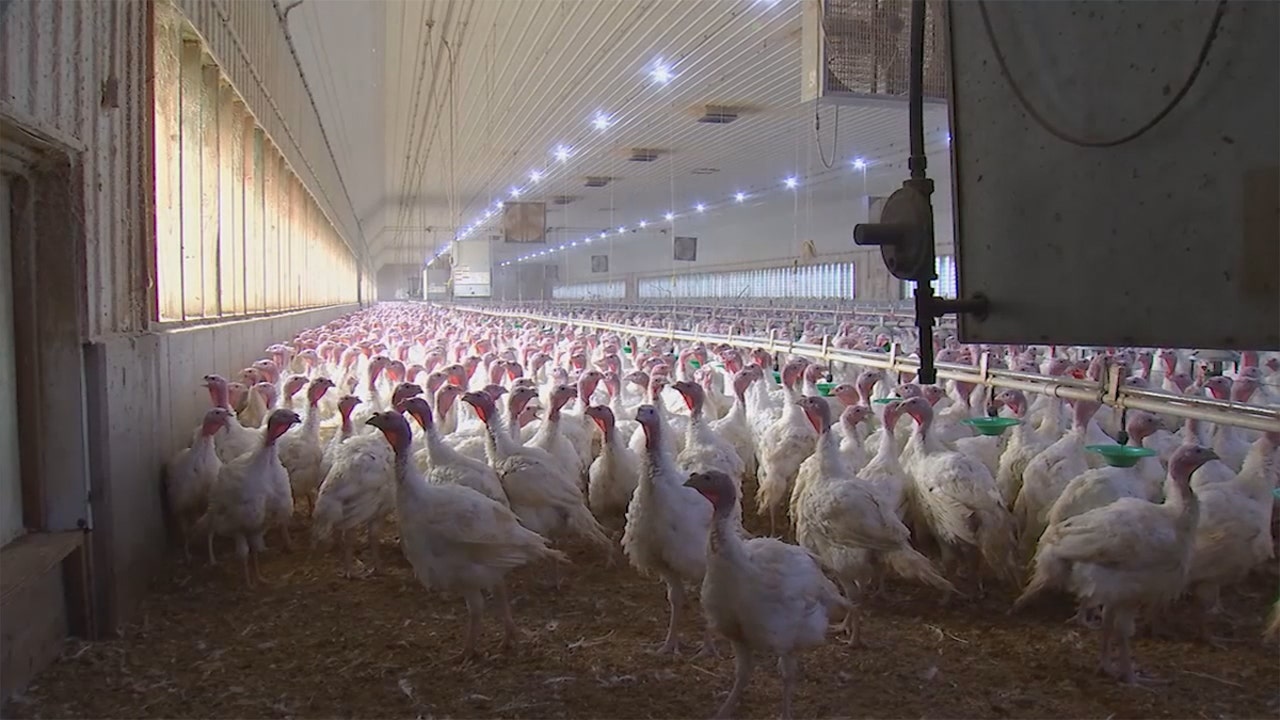(FOX 9) – The bird flu virus that decimated Minnesota poultry flocks seven years ago has returned, with state authorities confirming on Saturday that they detected cases in two flocks.
The virus was found in a commercial flock of turkeys in Meeker County and in a backyard flock with a mix of chickens, ducks and geese in Mower County, according to the Minnesota Board of Animal Health.
The H5N1 virus, although highly contagious in birds, poses a low risk to the public or food safety, according to the Center for Disease Control. No human cases have been detected in the United States.
But Minnesota is the nation’s largest turkey producer, and news of the outbreak has poultry farmers across the state worried. They fear a repeat of the 2015 outbreak, when the virus spread to 100 sites in 23 counties, resulting in the loss of an estimated 9 million birds and $650 million in damage, according to figures from the State.
Dr Jill Nezworski, veterinarian on the board of the Minnesota Turkey Growers Association, said while turkey farmers were “disheartened” by news of the new outbreak, there was also hope that measures biosafety measures taken by the industry following the 2015 crisis would help to reduce its impact.
She urged all farmers and backyard flock owners to do their part to help prevent the spread of the virus.
“This virus is an indiscriminate killer affecting all sizes of farm, from the handful of chickens in a family’s backyard to our largest business operations. We all need to take the necessary steps to prevent this disease from spreading.” , Nezworski said at a press conference. Saturday.
MBAH executive director Dr Beth Thompson said the agency and local governments in areas with high poultry populations also learned from the 2015 crisis.
“We have a really strong emergency response plan in place because of the lessons learned from that experience. We have an incident management team that has already been assembled,” Thompson said.
Since 2015, backyard flocks have become more common in Minnesota and across the country, with cities and counties passing laws to allow them. Tom Peterson, commissioner of the Minnesota Department of Agriculture, said the state has “cast a wide net” to inform backyard growers about the outbreak and steps they can take to help control the outbreak. contain.
Concerns about bird flu outbreaks are growing, especially among backyard chickens
The 2015 bird flu outbreak decimated poultry flocks across Minnesota, and turkey farmer John Zimmerman has been on high alert ever since.
“The messages I’m getting today from these people who have these small flocks, they really want to protect them. So they’re taking these steps to cover them up, limit their exposure to wild birds. And I think they care just as much about the birds like a big facility. And so they will take whatever action they can,” he said.
The MBAH urges owners of flocks of all sizes to review state-recommended biosecurity measures. Farmers who see possible signs of infection in their herds, such as a drop in water consumption or an increase in deaths, should contact a veterinarian immediately.
Nezworski also urged the public to empathize with all the poultry farmers they know.
“Biosecurity takes a lot of effort from our farmers. Give them a break when you interact with them in the community. Their livelihood is at stake and they are quite stressed out right now,” he said. she declared.

